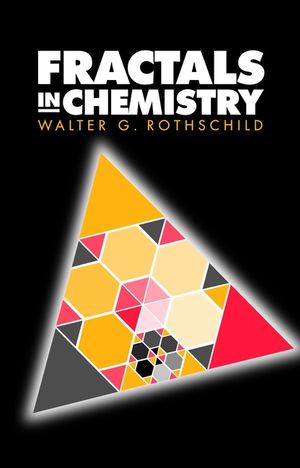Fractals in ChemistryISBN: 978-0-471-17968-9
Hardcover
248 pages
August 1998
 This is a Print-on-Demand title. It will be printed specifically to fill your order. Please allow an additional 10-15 days delivery time. The book is not returnable.
|
||||||
A practical guide to solving problems in chemistry with fractal geometry.
It has been two decades since Mandelbrot formulated his revolutionary theories of fractal geometry. Yet, in that brief time, fractals -those strangely beautiful infinite geometric patterns -and the computational processes that give rise to them have become a valued research tool in a broad array of scientific, social-scientific, and commercial fields. While inroads also have been made in applying fractals to theoretical and applied chemistry, there continues to be a dearth of texts and references on the subject. This book helps fill that gap in the literature.
Fractals in Chemistry provides chemists with a concise, practical introduction to fractal theory and its applications to a wide range of "bread and butter" issues in chemistry. Drawing upon his considerable experience as a researcher who helped pioneer some of the methods he describes, Walter Rothschild critically appraises the power and limitations of the fractal approach and shows how it can provide more predictive classification schemes and explain phenomena difficult to handle by classical means. Then, with the help of nearly 100 illustrations, he demonstrates how to apply fractals to model chemical phenomena such as adsorption, aggregation, catalysis, chemical reactivity, degradation, and turbulent flames, and how to understand dynamics on fractals in terms of fractons in diffusion-limited reactions, dispersive spectroscopies, and energy transfer.
Fractals in Chemistry is both a valuable working resource for professionals in physical chemistry, chemical physics, and computer modeling and an excellent graduate-level text for courses covering the use of fractals in chemistry.
It has been two decades since Mandelbrot formulated his revolutionary theories of fractal geometry. Yet, in that brief time, fractals -those strangely beautiful infinite geometric patterns -and the computational processes that give rise to them have become a valued research tool in a broad array of scientific, social-scientific, and commercial fields. While inroads also have been made in applying fractals to theoretical and applied chemistry, there continues to be a dearth of texts and references on the subject. This book helps fill that gap in the literature.
Fractals in Chemistry provides chemists with a concise, practical introduction to fractal theory and its applications to a wide range of "bread and butter" issues in chemistry. Drawing upon his considerable experience as a researcher who helped pioneer some of the methods he describes, Walter Rothschild critically appraises the power and limitations of the fractal approach and shows how it can provide more predictive classification schemes and explain phenomena difficult to handle by classical means. Then, with the help of nearly 100 illustrations, he demonstrates how to apply fractals to model chemical phenomena such as adsorption, aggregation, catalysis, chemical reactivity, degradation, and turbulent flames, and how to understand dynamics on fractals in terms of fractons in diffusion-limited reactions, dispersive spectroscopies, and energy transfer.
Fractals in Chemistry is both a valuable working resource for professionals in physical chemistry, chemical physics, and computer modeling and an excellent graduate-level text for courses covering the use of fractals in chemistry.



